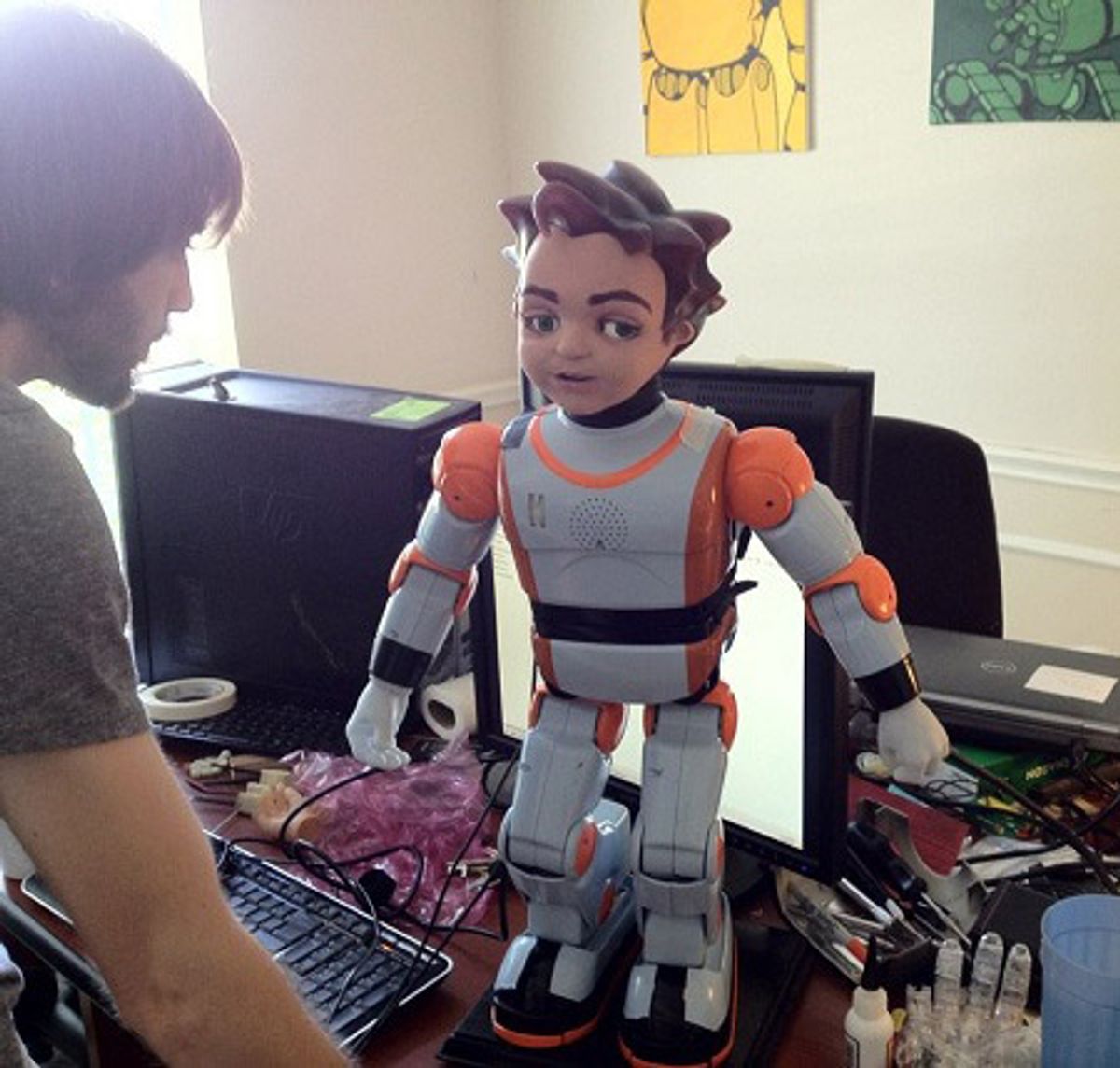Hanson Robotics is well known for its family of robots with delicately engineered, highly expressive faces made out of something that isn't called Flubber. At anywhere from $8,500 to $14,500, this level of sophistication doesn't come cheap, but a new model of Zeno the robotic boy has dropped some hints about a new generation of smaller cousins which will be much less expensive.
You get what you pay for with robots like Zeno: the top-of-the-line version comes with a full set of Dynamixel RX-28 and RX-64 servos, plus a sensor suite that includes an IMU, gyro, accelerometer, compass, torque sensors, touch sensors, and even temperature sensors. But the highlight (and the reason to buy one of these as opposed to something else) is the head:
The key is our skin, made of our patented Frubber material. This is a biomimetic polymer that contracts and folds like skin. This allows the robots to achieve life-like expressions in a low power, robust package. Because of our skin, our knowledge of anatomy, and our sophisticated robot engineering, RoboKind robots can accurately simulate the action of over 32 facial muscles. This allows for all the expressions of Ekman's Facial Action Coding System, and more.The eyes move independently, and contain separate cameras for true binocular stereovision. The eye action allows for natural eye motion, simulating natural eye saccades. The eye and neck DoF redundancy is important for expressive gestures and gaze fixation. The eyes contain high definition cameras that are 720p, 30fps with USB 2.0. The eyes have natural eyelid action. The head nods, turns, tilts and pitches.
This newest version of Zeno has a face that's been simplified, along with a redesigned body. Here it is in action, showing off an impressive knowledge of sports trivia and second amendment rights, among other things:
Generally, I'm not a fan of building humanlike (anthropomorphic) robots just for the sake of building humanlike robots, partially because I feel like there's plenty of evidence to show that a human face (for example) is simply not necessary for conveying complex emotions and indeed can even be counterproductive. I do, however, agree with David Hanson that building robots that do convey emotions is important to the future of human-robot interaction, and making non-uncanny (canny?) research robots is one way of doing so that should definitely be explored.
[ Hanson Robotics ] via [ Plastic Pals ]
Evan Ackerman is a senior editor at IEEE Spectrum. Since 2007, he has written over 6,000 articles on robotics and technology. He has a degree in Martian geology and is excellent at playing bagpipes.




